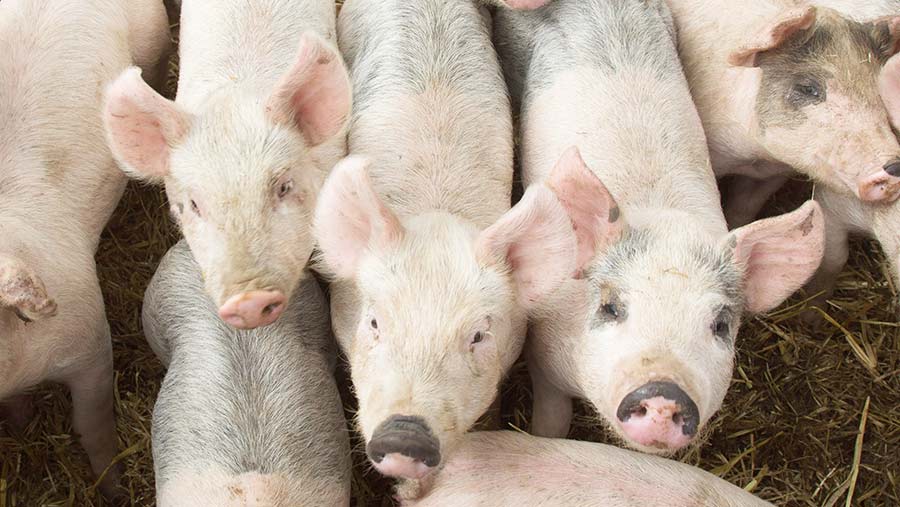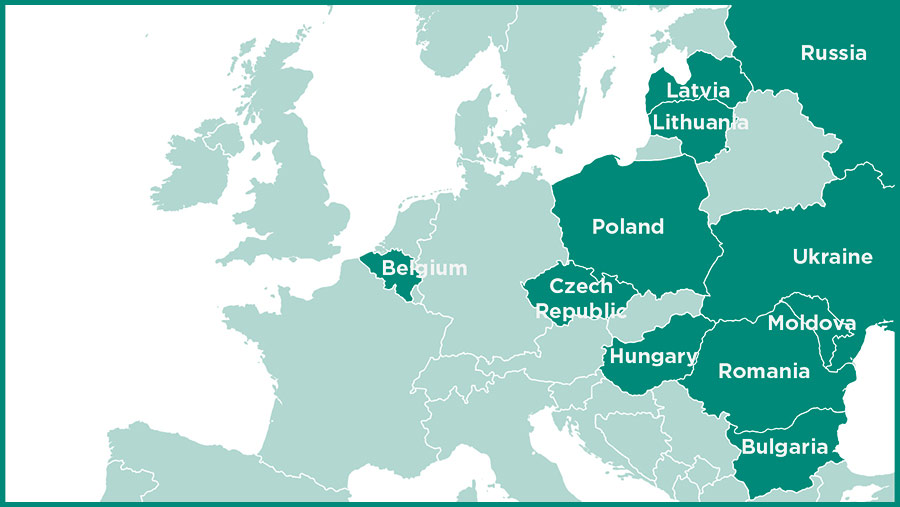A guide to African Swine Fever and how to minimise the risks
 © Tim Scrivener
© Tim Scrivener African Swine Fever (ASF) is spreading westwards across Europe and has recently been detected in wild boar populations just across the channel, in Belgium.
Amid warnings of potentially dire consequences for the UK herd, the Garth Pig Vet Practice’s Tom Iveson answers questions on ASF and offers some tips on keeping the disease out.
See also: Guide to biosecurity measures to keep pigs disease-free
What is ASF?
As the disease name suggests, the causal virus Asfivirus first originated in Africa and is specific to pigs, wild boars and associated species.
It has spread to Asian and European countries, but the UK has never recorded a case.
How big a danger is ASF?
It would probably be worse for the UK pig industry than a recurrence of foot-and-mouth disease. We must take it seriously.
It would mean the compulsory culling of infected and nearby herds and some business might never recover from this. However, its biggest danger lies in its ability to persist within wild boar populations.
How is ASF contracted?
The virus persists in body fluids – specifically blood – and tissue and is spread by any contact with an animal, food or object that has been contaminated. The survivability of the virus is remarkable.
It can remain viable in pork even when it has been cooked or cured. Incredibly, the live virus has even been isolated in the sun-bleached bones of decomposed animal carcasses. In certain countries the virus is tick-borne and transmitted to the host animal by the biting insect as it feeds. However, this tick is not present in the UK.
What are the clinical symptoms?
The array and severity of symptoms vary enormously from one herd to another and this can make it hard for farmers to detect early in their pigs.
Symptoms may be high temperature and depressed feed intakes, which could be caused by any number of different diseases. Other signs are far more dramatic, with abortions and sudden deaths. On post-mortem, haemorrhaging in the carcass can be present – specifically under the skin and in the bladder.
Can ASF be treated?
This is a notifiable disease and would be controlled through mandatory culling. Treatment or control is therefore not permitted.
Work to develop a vaccine is continuing at a number of research centres worldwide, including the UK’s Pirbright Research Institute. However, the vaccine would probably be used only in wild boar populations, as its use would affect export markets.
Can you test for ASF?
Yes. The Animal and Plant Health Agency officials will use it as part of a control plan if the disease is suspected.
How is it being spread?
The main factor allowing the disease to travel over large distances is the movement of people. Because the disease persists on cured and cooked food, clothing and vehicles, the movement of labour from east to west is a significant issue.
Likewise, tourists carrying food products and hunters who travel to Europe during the wild boar shooting season, are significant risks.
You can keep up-to-date with ASF outbreaks on the Defra website.
How is trade affected?
The EU operates a regional policy rather than a ban on an individual country. It means that while trade is banned from restriction zones around infected premises, the rest of the country can continue to export pigmeat.
However, that has not stopped more than a dozen countries banning imports of pigmeat from Belgium. Live exports of Belgian pigs to Dutch slaughterhouses have also been suspended.
Both Belgian and Dutch pig prices have fallen sharply and Belgium is attempting to activate EU disaster funding to help shore up its pig industry.
Disease spread and trade issues
The disease has spread rapidly through domestic pigs in eastern European countries. Of those, Romania is by far the worst affected: it recorded almost 600 cases in July and August.
Extensive culling is carried out around sites of outbreaks and one Romanian farm had 140,000 pigs slaughtered. Poland, Lithuania and Russia have also recorded significant numbers.
The UK has never had a case but the detection of the disease in dead wild boar in Belgium on 13 September saw our risk level raised from Low to Medium. The area where the boar was found is densely forested and has borders with Luxembourg and France.
Since then, Defra says, three new cases have been confirmed in wild boar, taking the total to five. However, Belgium’s food safety agency – Afsca – has reported that the total has risen to 18 wild boar in the same forested region.
While the cases are not in Belgium’s main pig-producing region, about 4,000 pigs in nearby herds have been culled to date.

More on African Swine Fever
Get the latest news about ASF and what you can do to prevent the virus entering your farm with the Pig Progress African Swine Fever information hub.

